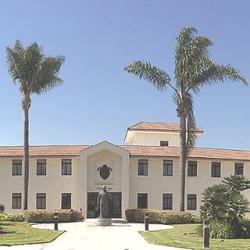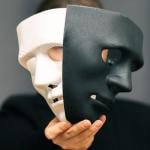This item about Joe Biden wearing a rosary in tribute to his deceased son caused quite a stir—not least, because many view wearing the beads as jewelry to be taboo.
Katrina Fernandez addressed this controversy last year:
Don’t assume a person wearing a rosary as a necklace is doing so out of disrespect or even ignorance. In fact, a lot of very devout and practicing Catholics of Hispanic heritage wear the rosary in the same way that most of us wear medals and the crucifix around our necks.
If you see someone wearing a rosary around their neck let that be an opportunity for evangelization. If that’s outside your comfort zone then pray for the wearer’s conversion. Never underestimate the power of the rosary and the intercession of Our Blessed Mother.
However, what Biden does is a little different. He doesn’t wear the rosary around his neck, but around his wrist. (You can see some examples of this here.)
It also is similar to the beads Pope Francis wears, a chotki, or prayer rope, popular among Eastern Catholics and the Orthodox:
The history of the prayer rope goes back to the origins of Christian monasticism itself. When monks began going into the deserts of Egypt, it was their custom to pray the entire 150 Psalms every day. However, because some of the monks were unable to read, they would either have to memorize the psalms or perform other prayers and prostrations in their stead. Thus the tradition of saying 150 (or more) Jesus Prayers every day began.The western Rosary is sometimes said to have the same initial origin.
You can also find many people (including a few priests I know) who wear “rosary rings,” to facilitate praying the beads.
[img attachment=”253780″ align=”aligncenter” size=”full” /]
It seems using this kind of rosary—which is specifically designed to be worn as a piece of jewelry, and prayed when on the finger or wrist—is different from taking a rosary and adapting it as a necklace. It can also aid in devotion—and might even prompt a little evangelization (as Katrina noted), as people see what you’re wearing and ask about it (which is what happened with Biden on national television.)
A few years ago, Father Edward McNamara, at ZENIT, wrote:
Wearing a sacred object is not the same as using it in a secular or inappropriate manner. In fact, many religious congregations wear the rosary as part of their habit, usually hanging from a belt. There are also several historical cases of laypeople wearing the rosary for devotional purposes. For example, in his book “The Secret of the Rosary,” St. Louis de Montfort illustrates the positive results of this practice in an episode from the life of King Alfonso VI of Galicia and Leon.
I think that the key to answering this question can be found in St. Paul: “So whether you eat or drink, or whatever you do, do everything for the glory of God” (1 Corinthians 10:31). In other words, there should be no indifferent or irrelevant actions in the life of a Christian.
…At the same time, as Catholics we should presume the good intentions of the person wearing a rosary unless other external elements clearly indicate otherwise.
Similar reasoning is observed in dealing with rosary bracelets and rings, although in this case there is far less danger of confusion as to meaning. They are never mere jewelry but are worn as a sign of faith.
According to some sources, small single-decade rosaries or chaplets were developed in times of persecution, as they were easily hidden and could be used without attracting undesired attention.
They also became popular among Catholic soldiers on the frontline especially during World War I.
Far more important than the visible wearing of a rosary is actually using the rosary, including publicly, for prayer. Then it is truly done “to the glory of God.”
Amen.
Rosary bracelet image via The Catholic Company












